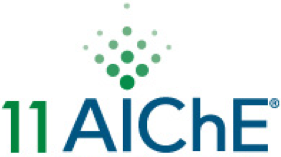

The reorientation of a magnetic nickel nanorod placed at the air/phospholipid interface is used to calculate the surface viscosity of spread monolayers of phospholipids, dipalmitoyl phosphatidyl choline (DPPC) and dimyristoyl phosphatidyl ethanolamine (DMPE). While surface viscosity was found to depend on the surface pressure in both lipids, we detect an order of magnitude higher surface viscosity for DMPE films even in the so called liquid coexistence region. This difference is higher than that reported at higher surface pressures and is attributed to the smaller headgroup size of DMPE. The smaller size of the PE head group increases the ability of the lipid molecules to pack into more organized domains at all surface pressures. The minute changes in the morphology of the lipid film are more significant at the lower surface pressures, which contributes to a higher surface viscosity difference. Thus microrheology presents an insight into the degree of lipid organization at the air/water interface, as well as the dependence of surface viscosity on the phase and morphology of the resulting two dimensional interfacial films.
Presenter(s)
Once the content has been viewed and you have attested to it, you will be able to download and print a certificate for PDH credits.
If you have already viewed this content,
please click here
to login.
